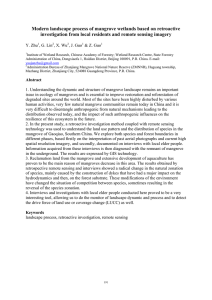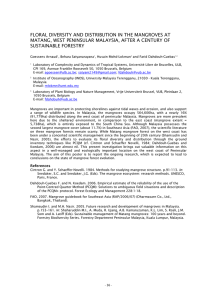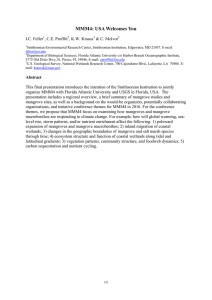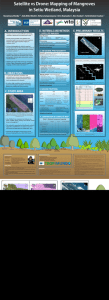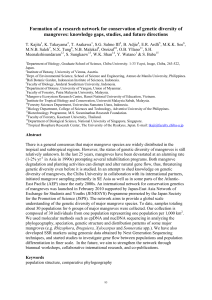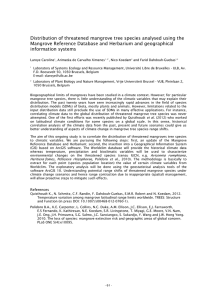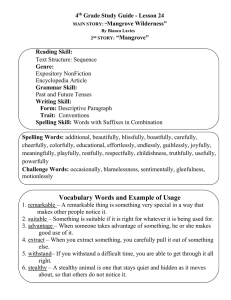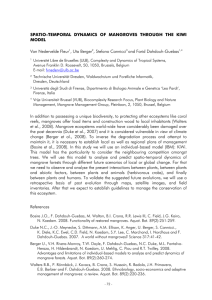Satellite vs Drone: Mapping of Mangroves in Setiu Wetland, Malaysia
advertisement
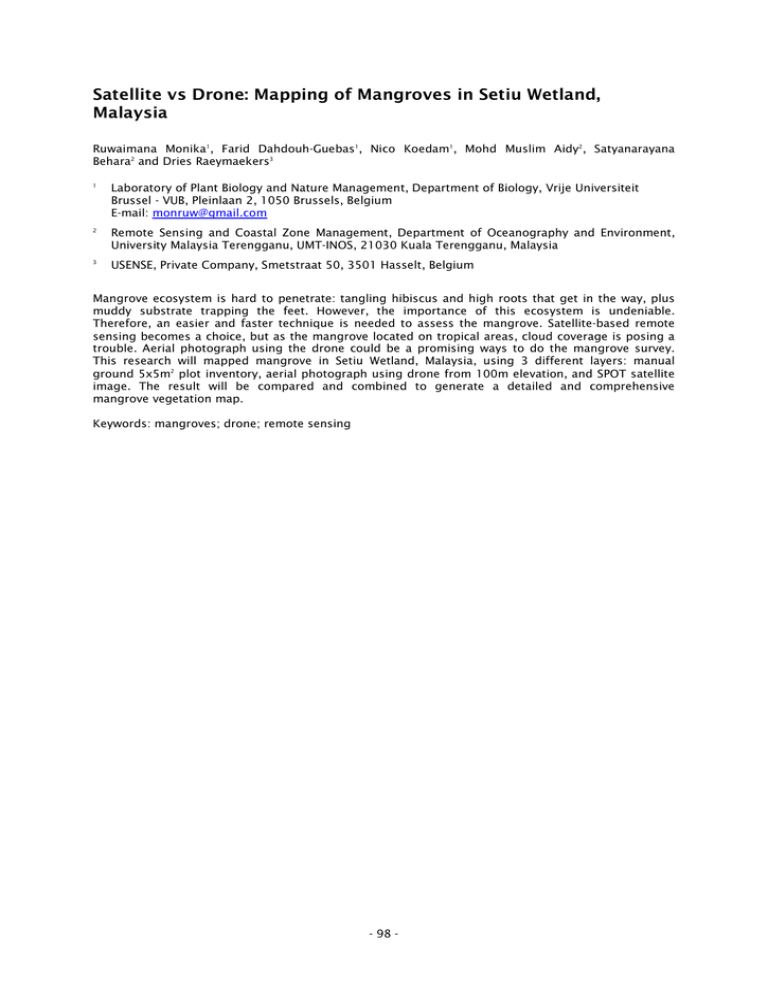
Satellite vs Drone: Mapping of Mangroves in Setiu Wetland, Malaysia Ruwaimana Monika1, Farid Dahdouh-Guebas1, Nico Koedam1, Mohd Muslim Aidy2, Satyanarayana Behara2 and Dries Raeymaekers3 1 Laboratory of Plant Biology and Nature Management, Department of Biology, Vrije Universiteit Brussel - VUB, Pleinlaan 2, 1050 Brussels, Belgium E-mail: monruw@gmail.com 2 Remote Sensing and Coastal Zone Management, Department of Oceanography and Environment, University Malaysia Terengganu, UMT-INOS, 21030 Kuala Terengganu, Malaysia 3 USENSE, Private Company, Smetstraat 50, 3501 Hasselt, Belgium Mangrove ecosystem is hard to penetrate: tangling hibiscus and high roots that get in the way, plus muddy substrate trapping the feet. However, the importance of this ecosystem is undeniable. Therefore, an easier and faster technique is needed to assess the mangrove. Satellite-based remote sensing becomes a choice, but as the mangrove located on tropical areas, cloud coverage is posing a trouble. Aerial photograph using the drone could be a promising ways to do the mangrove survey. This research will mapped mangrove in Setiu Wetland, Malaysia, using 3 different layers: manual ground 5x5m2 plot inventory, aerial photograph using drone from 100m elevation, and SPOT satellite image. The result will be compared and combined to generate a detailed and comprehensive mangrove vegetation map. Keywords: mangroves; drone; remote sensing - 98 -
